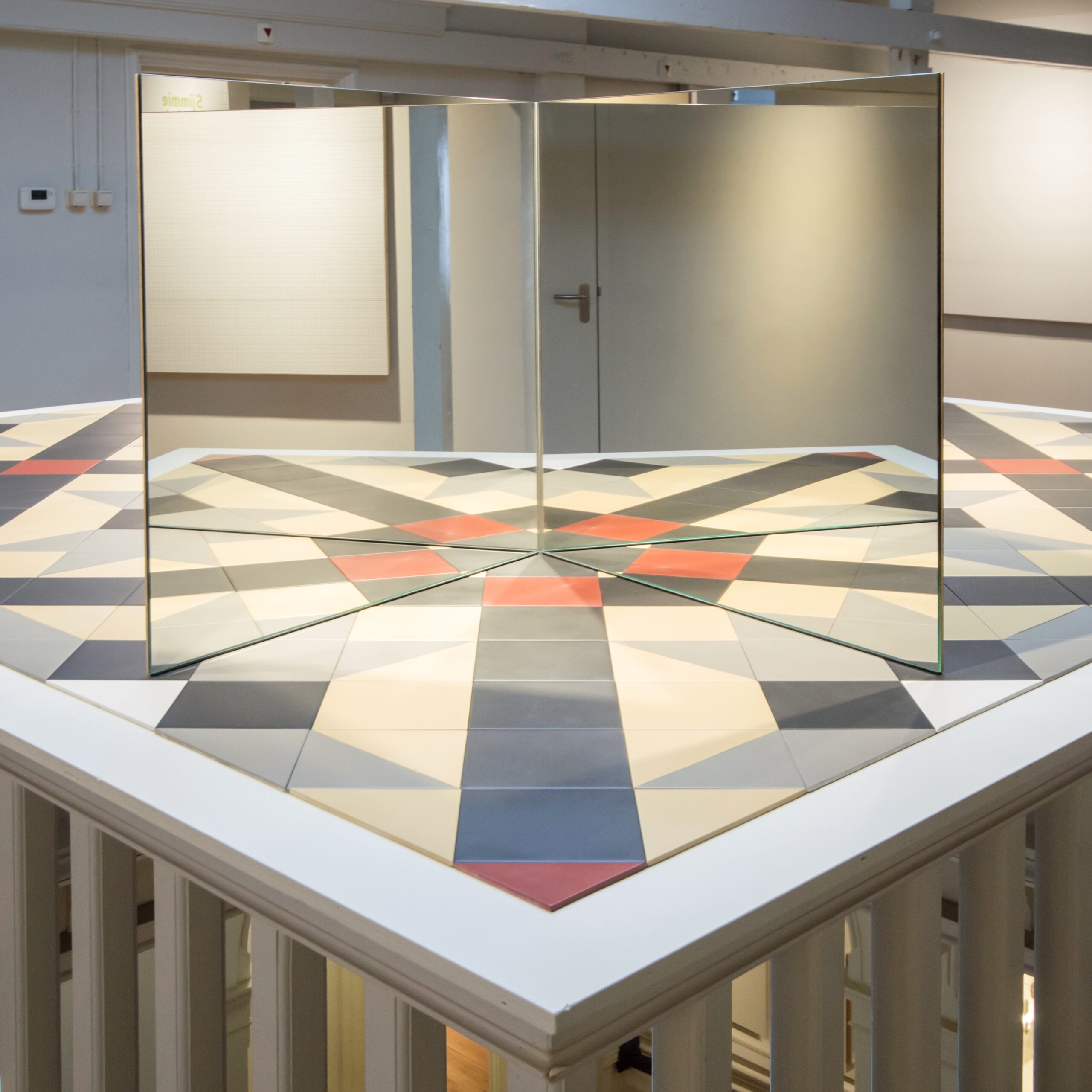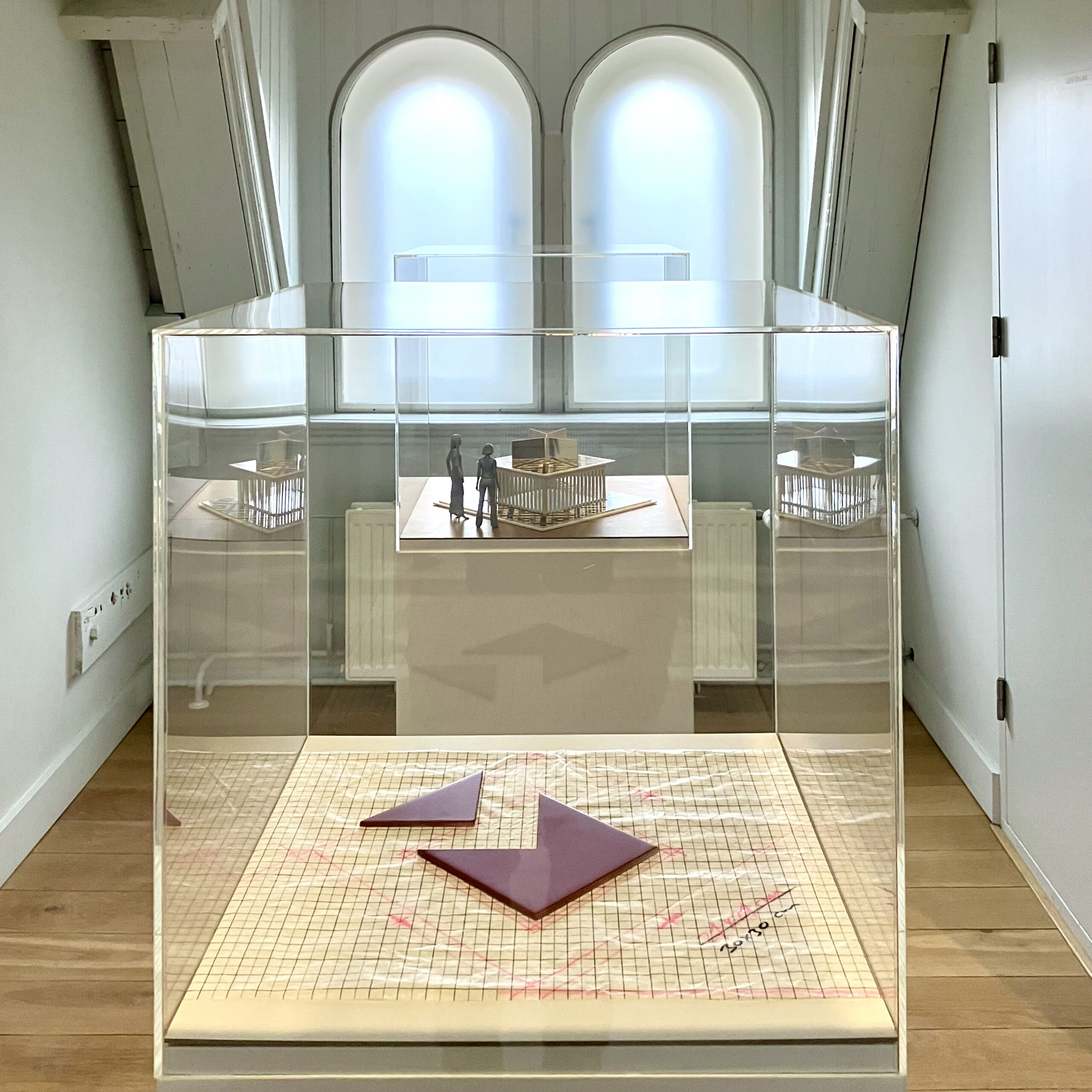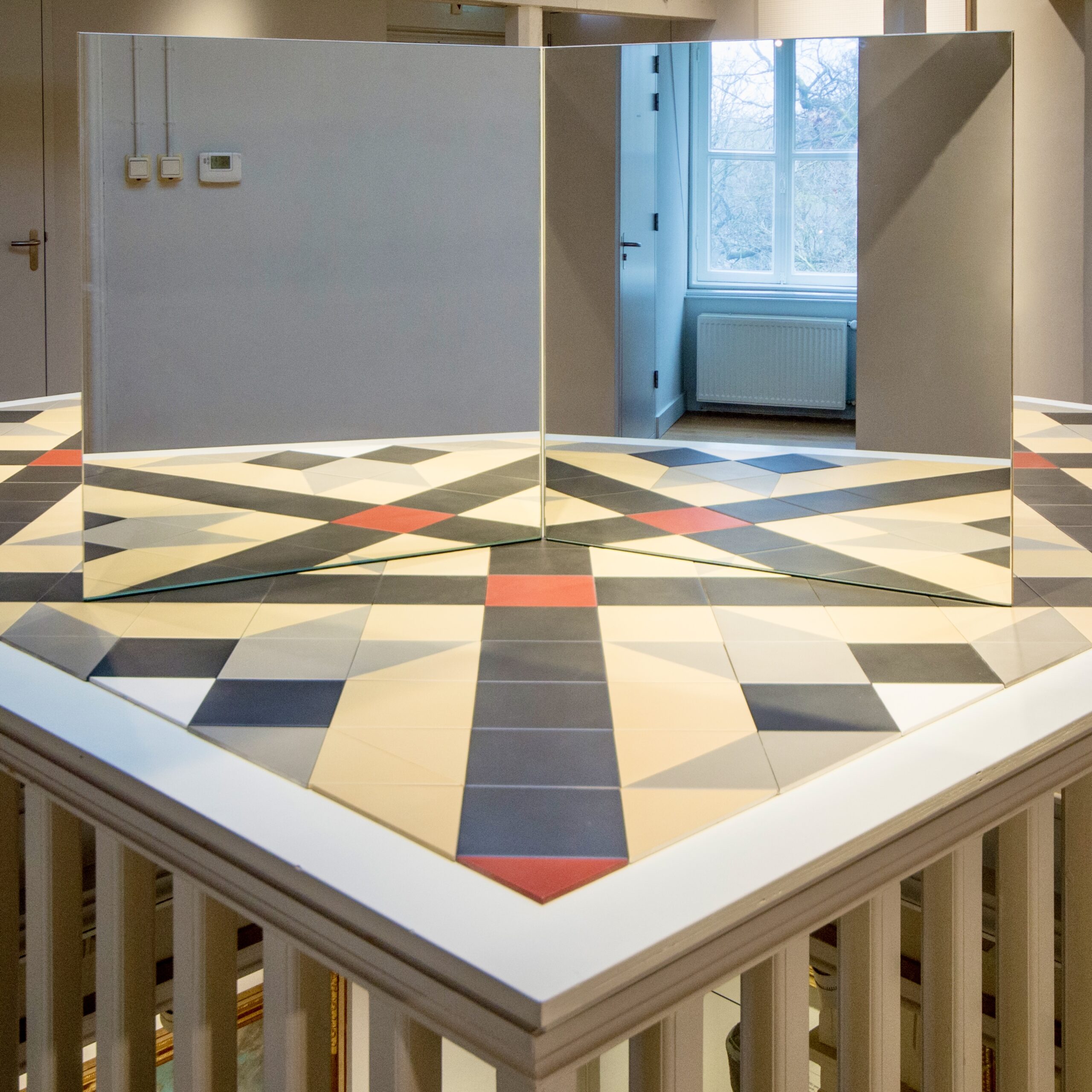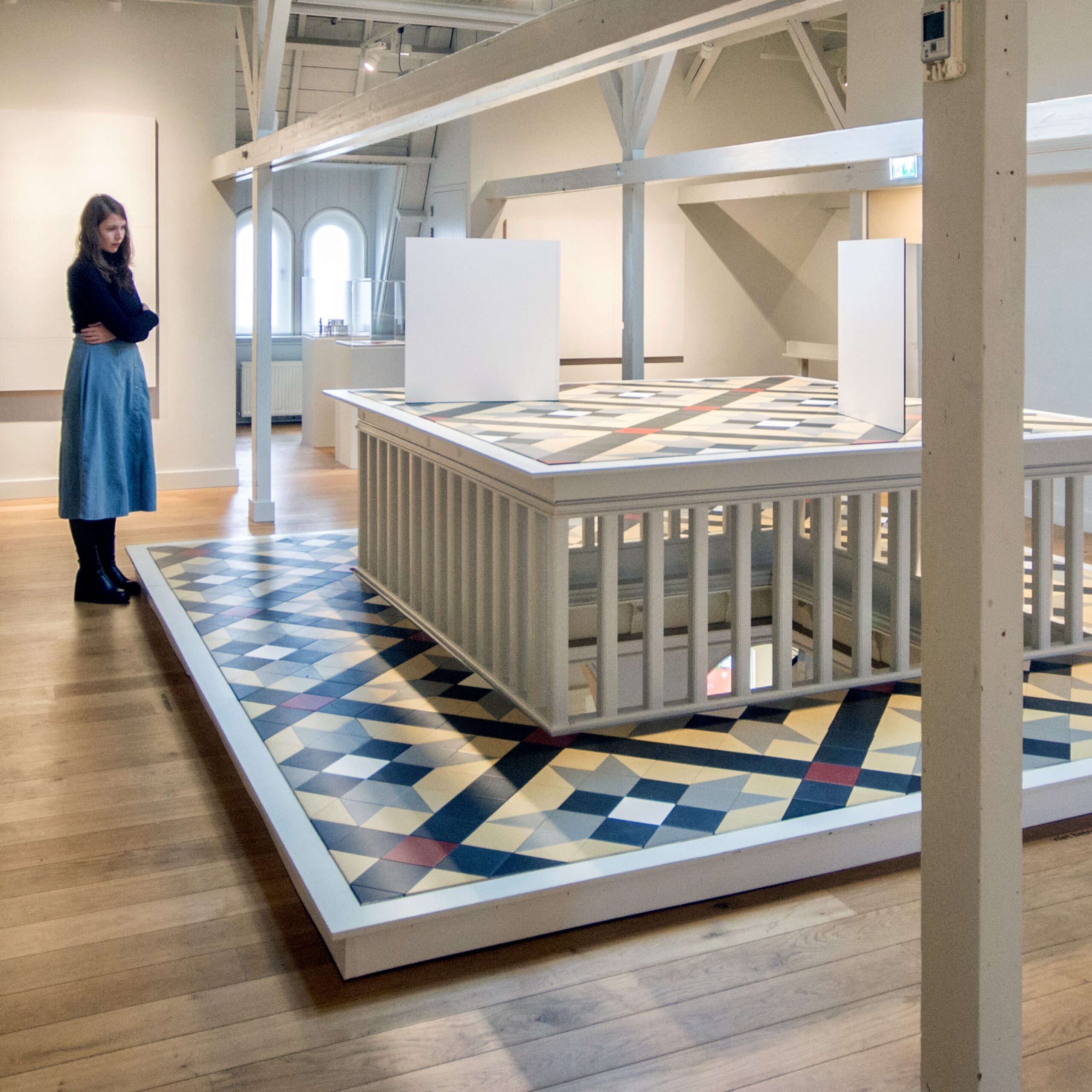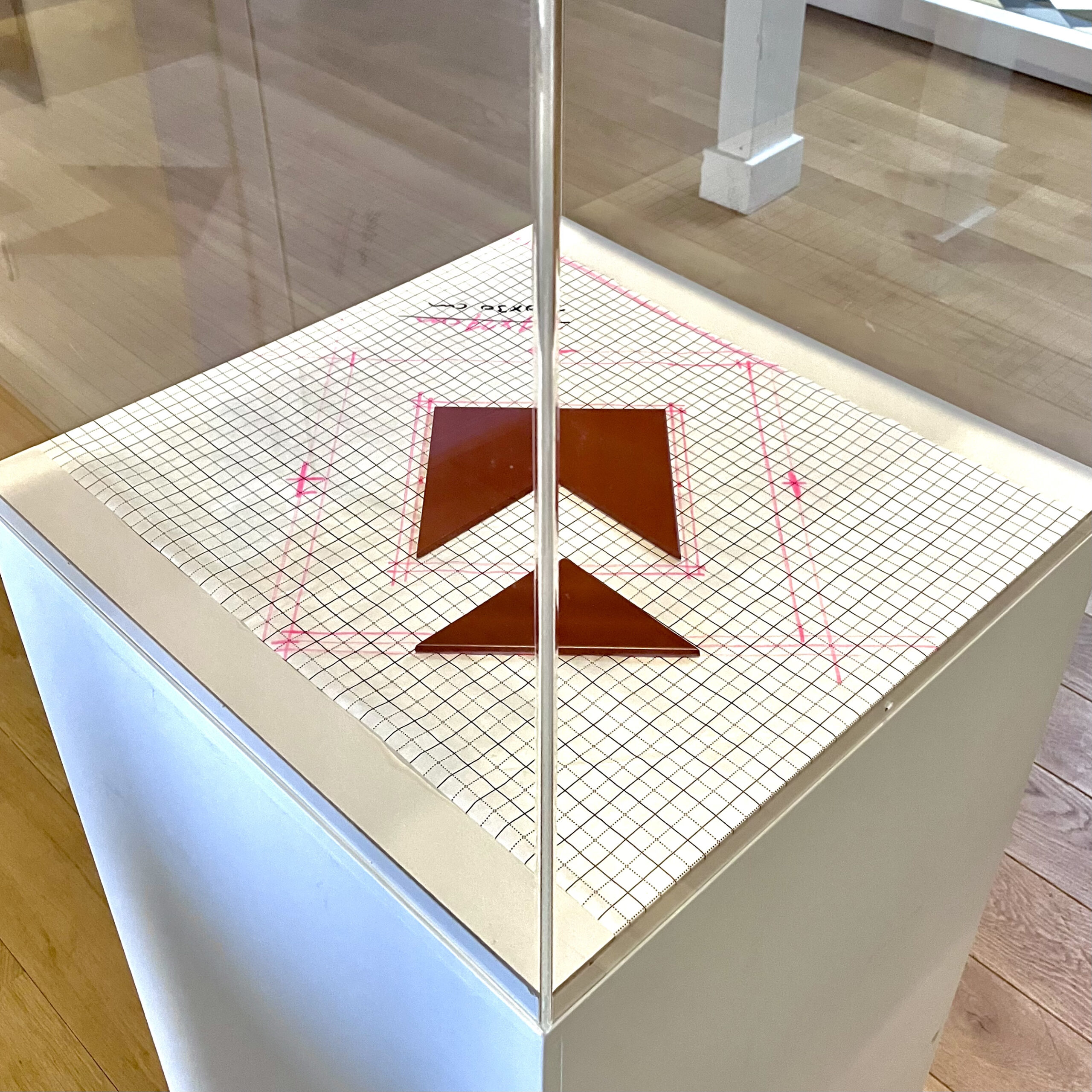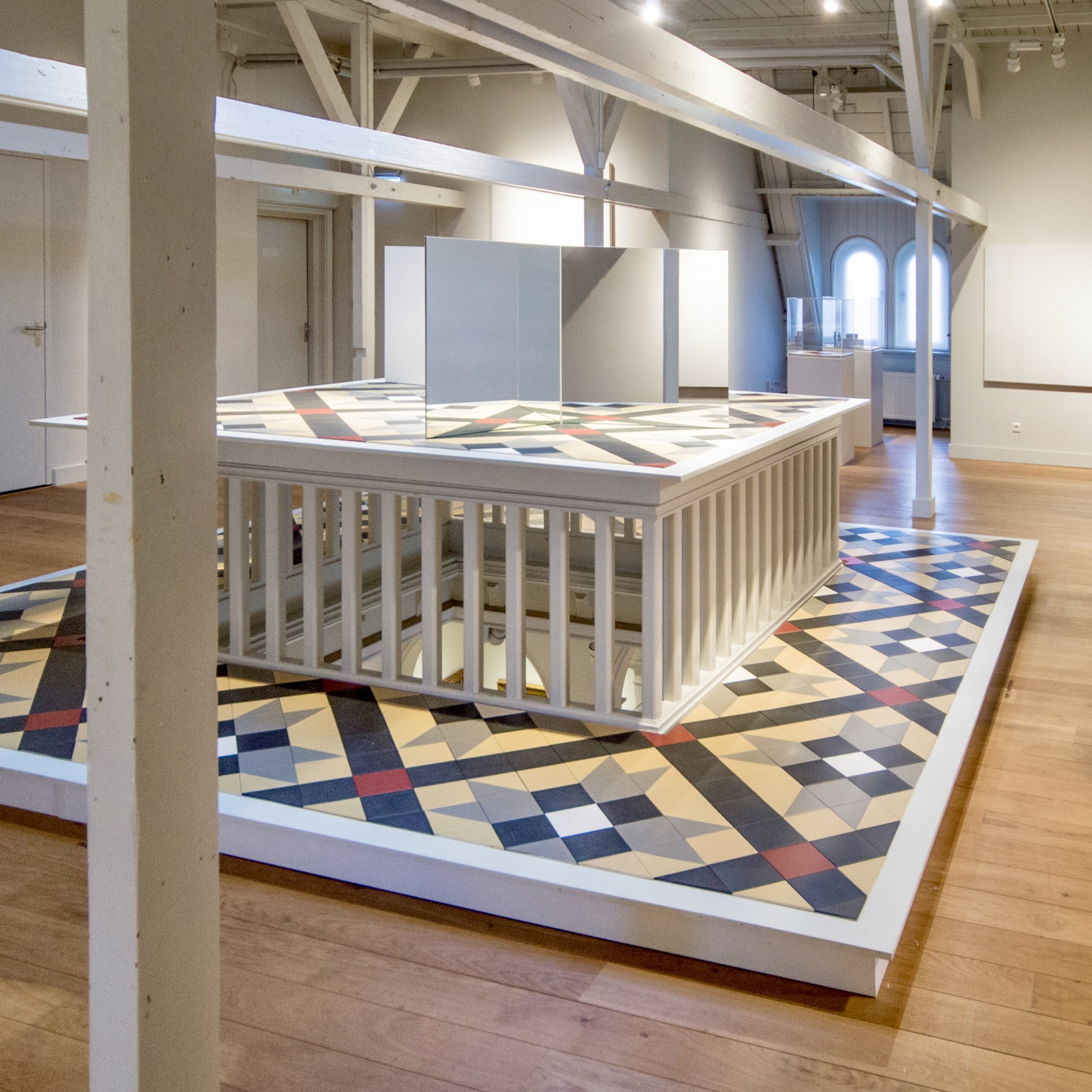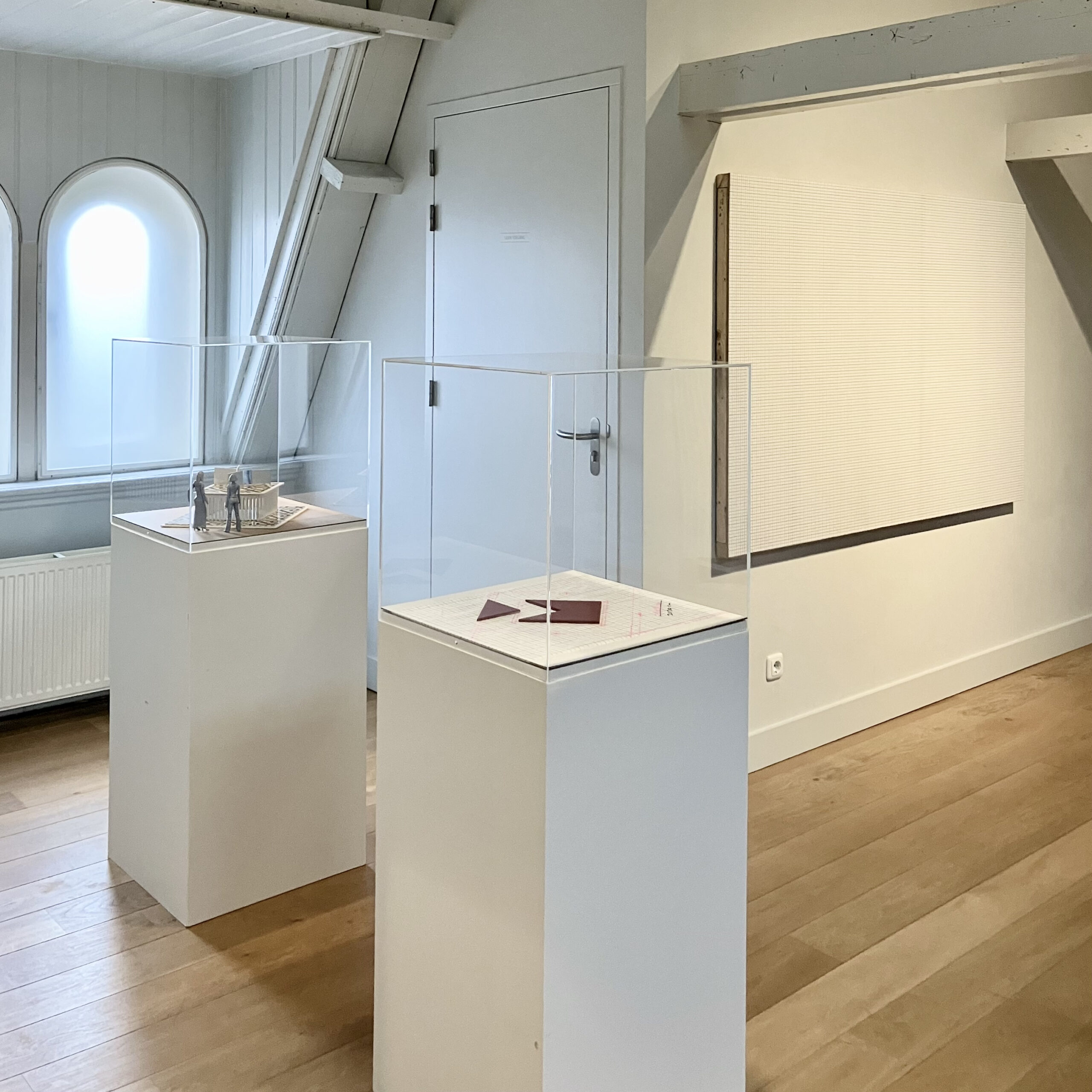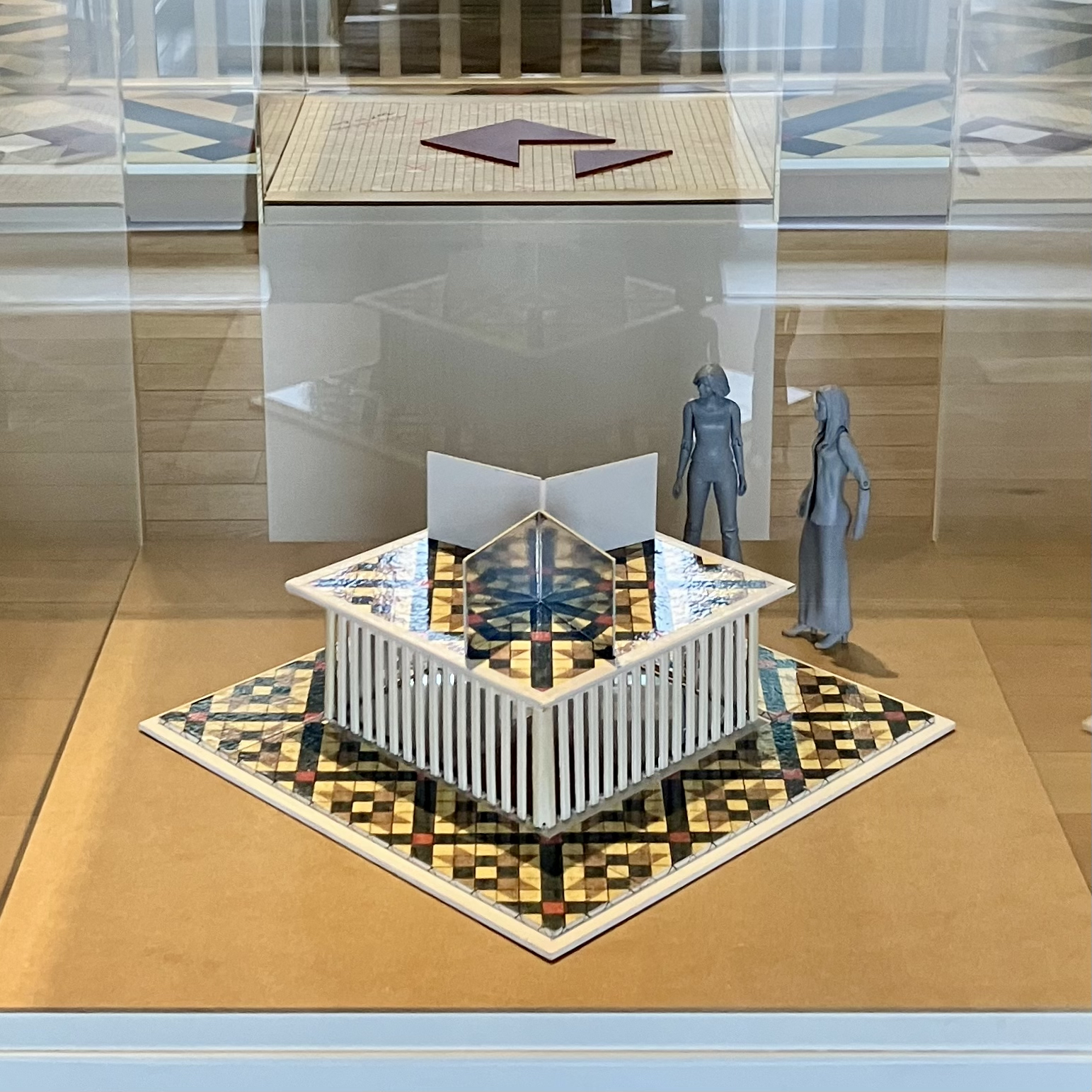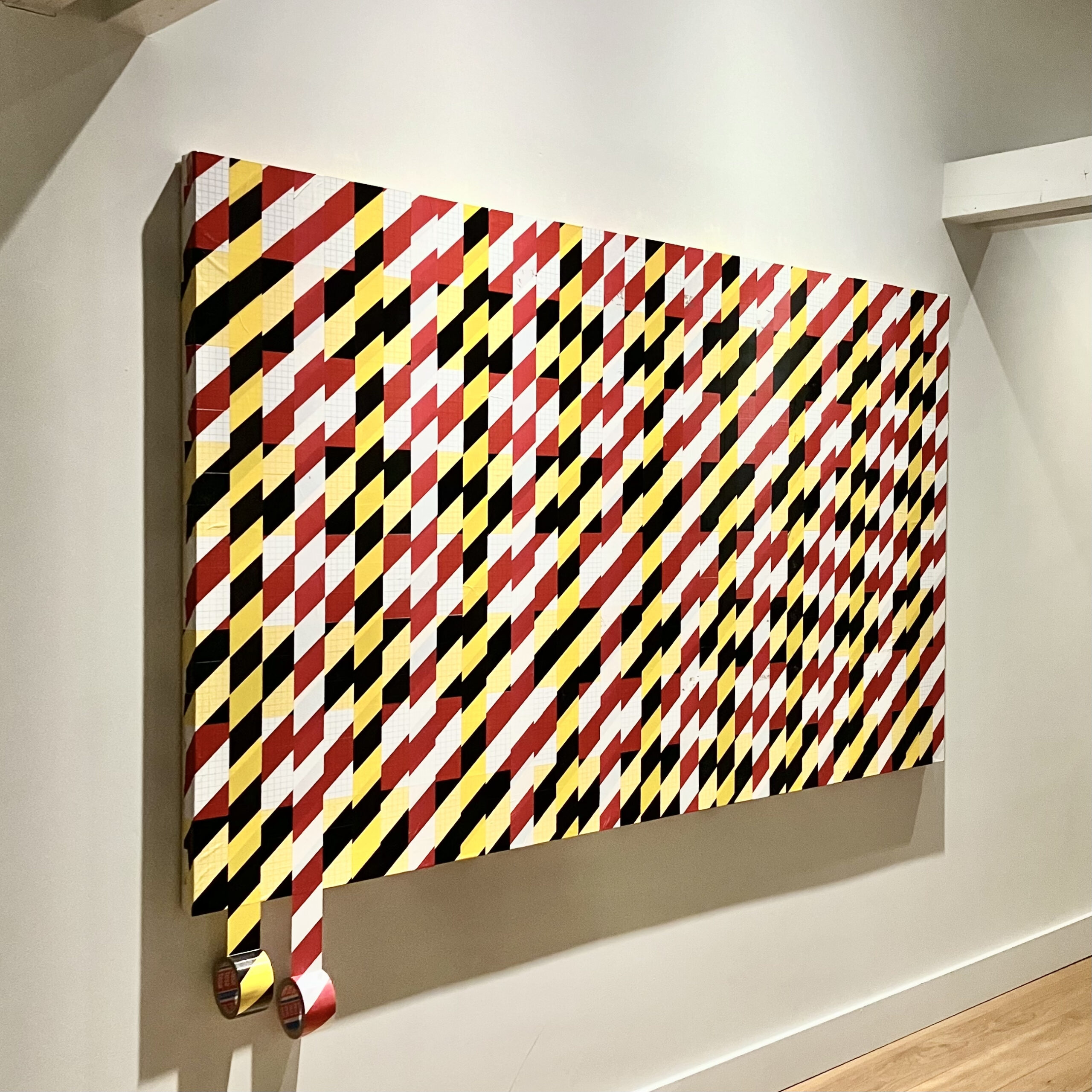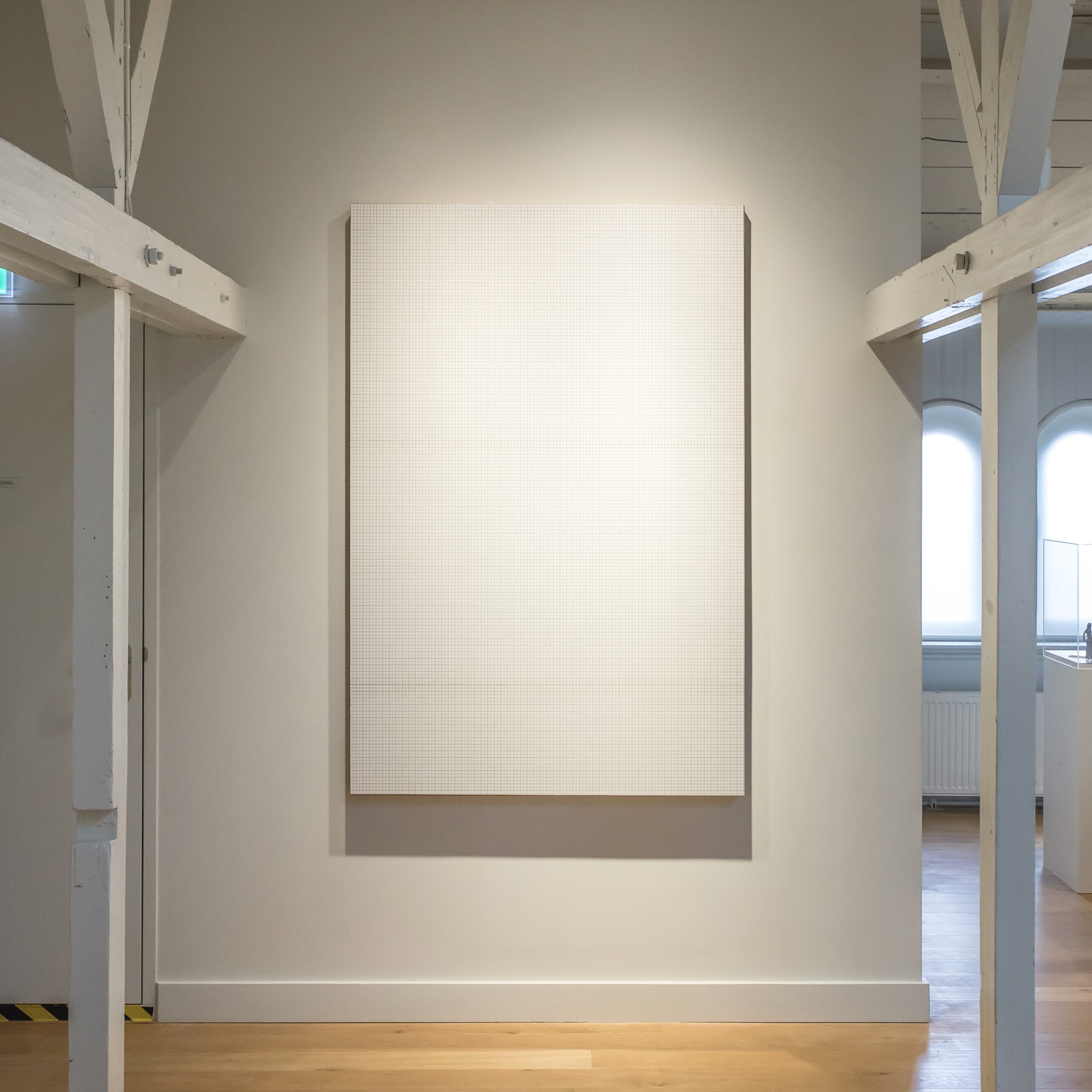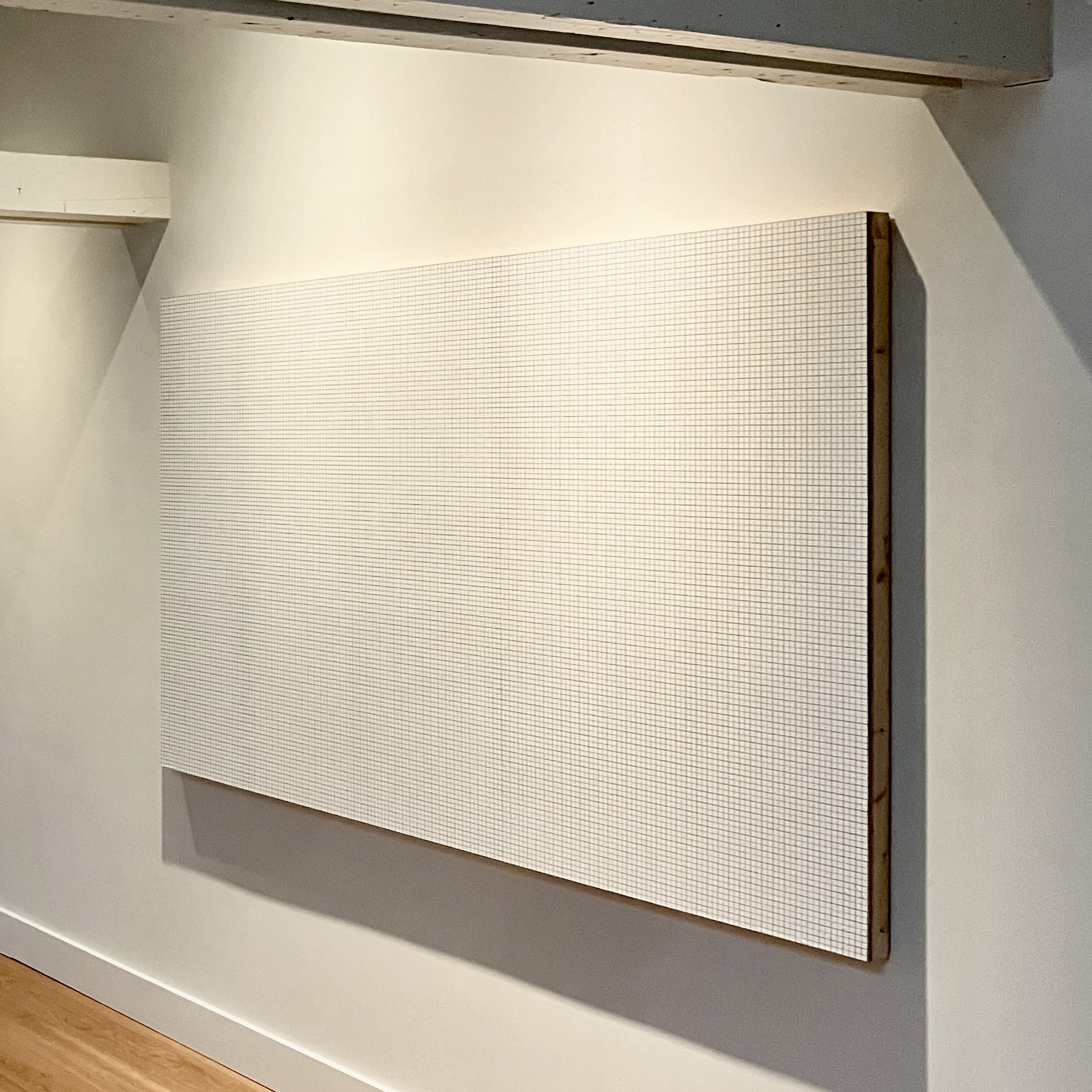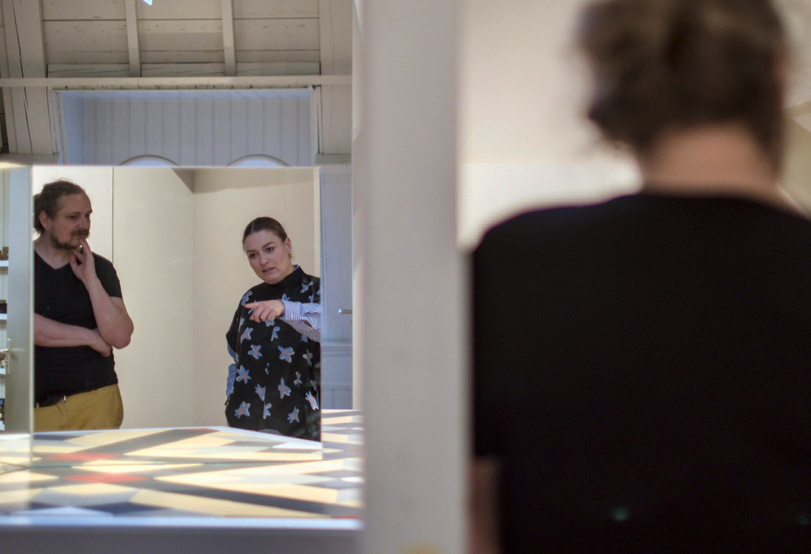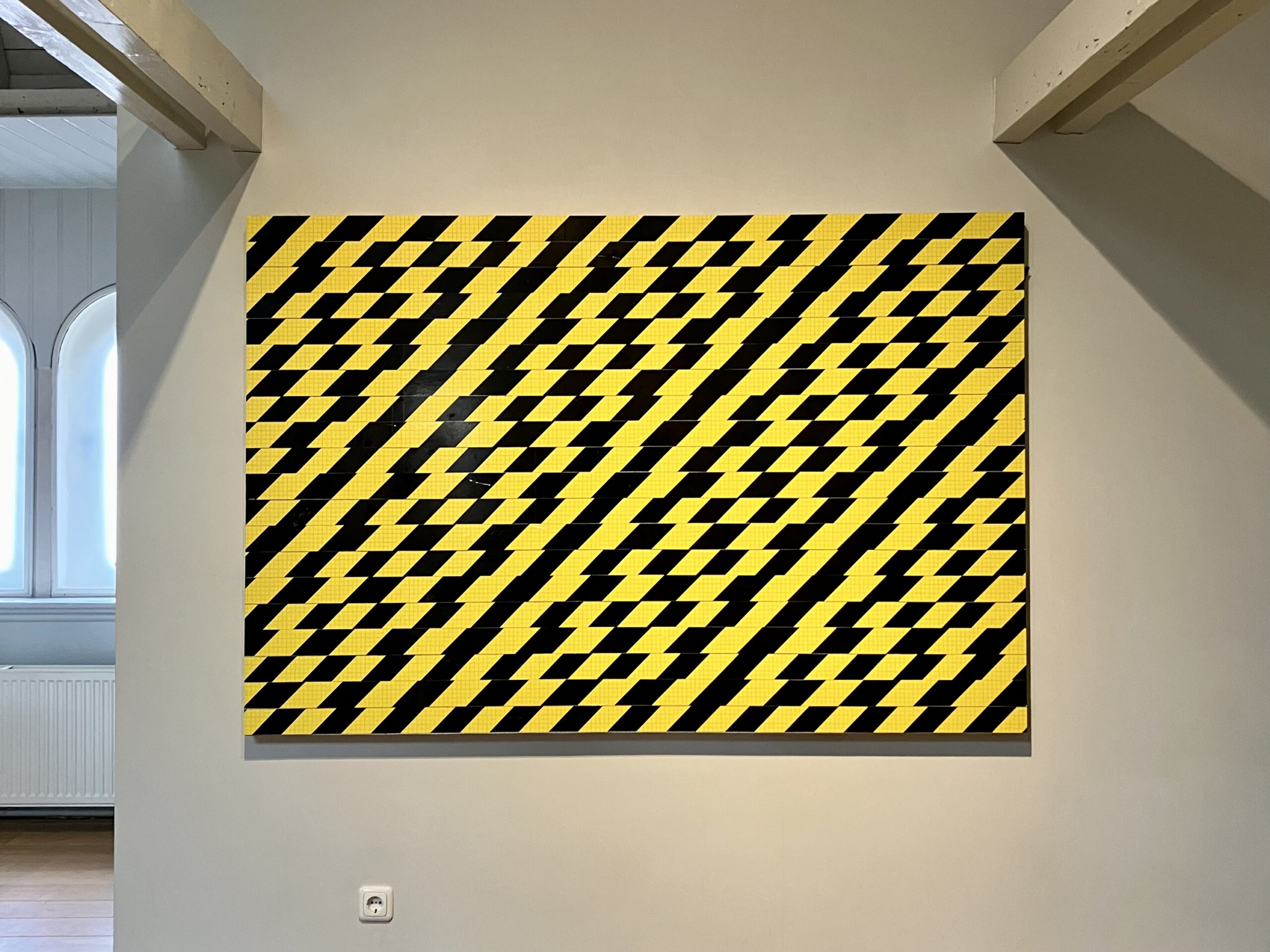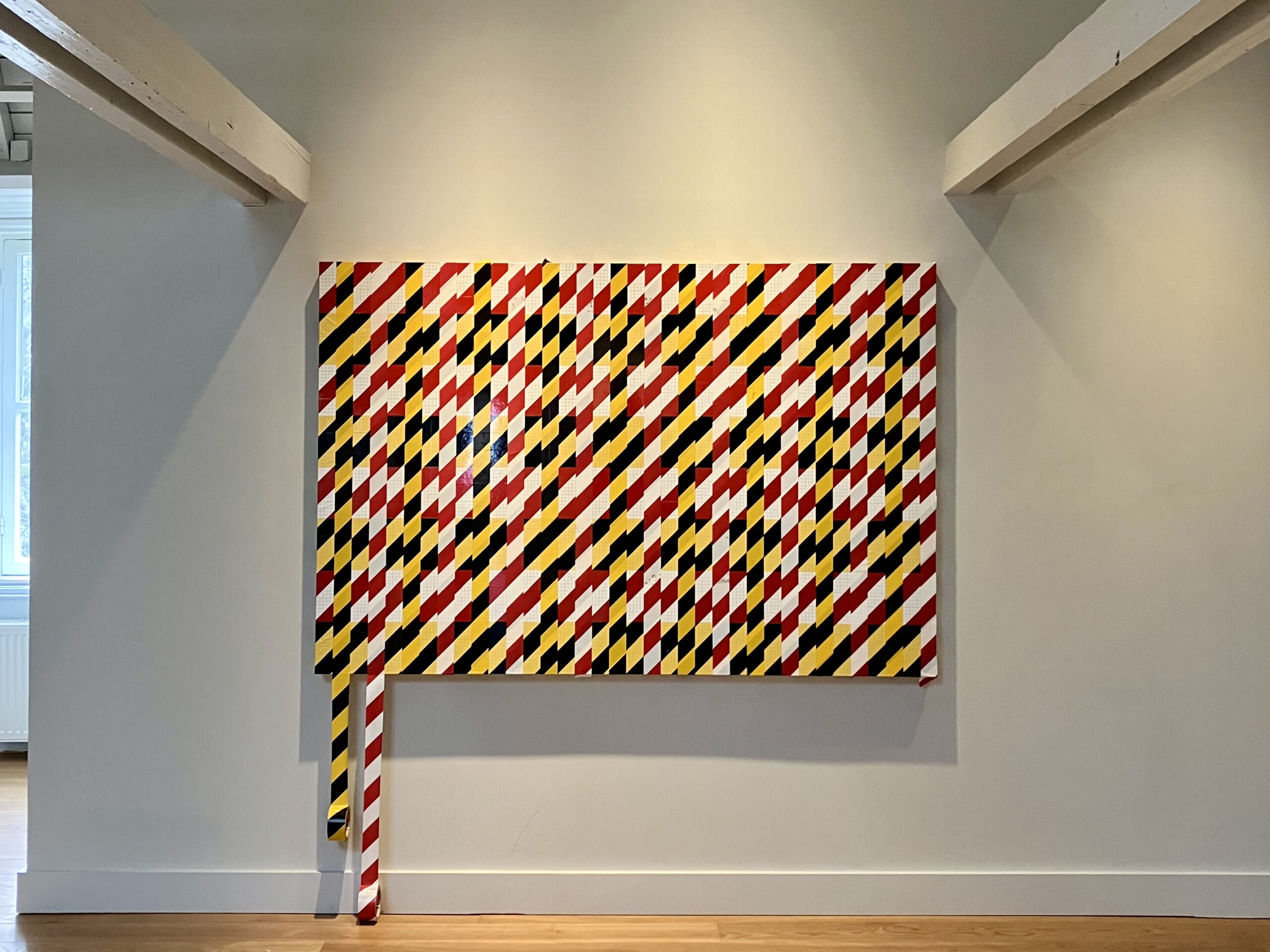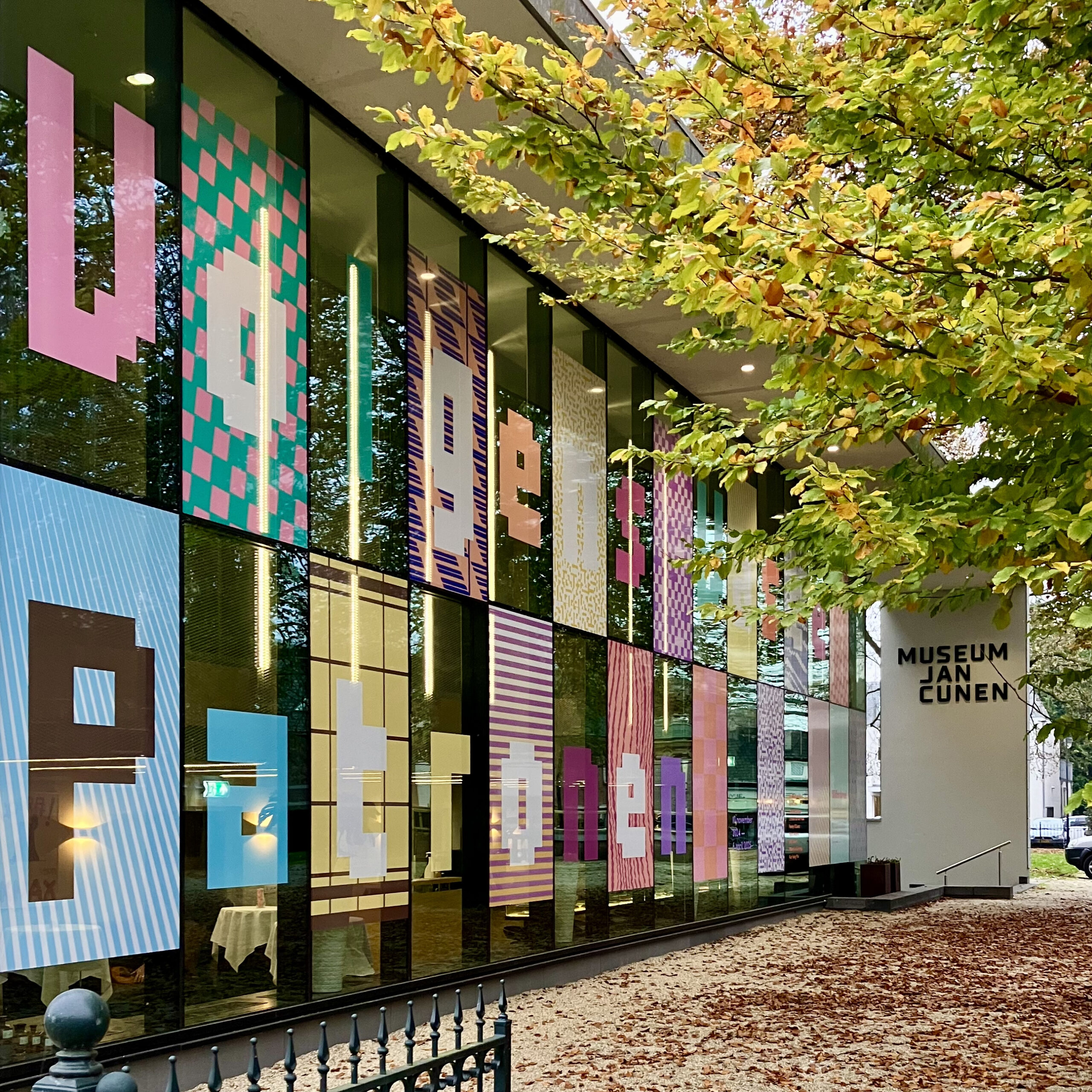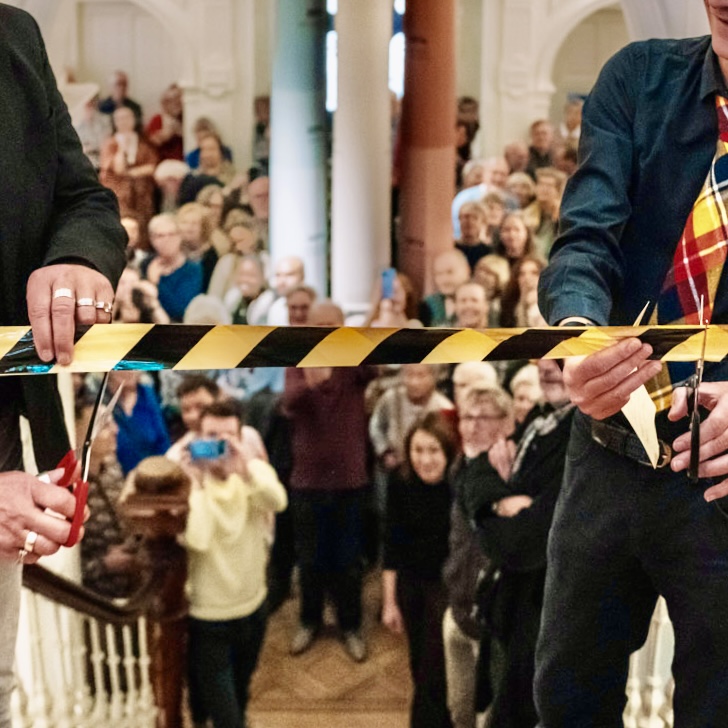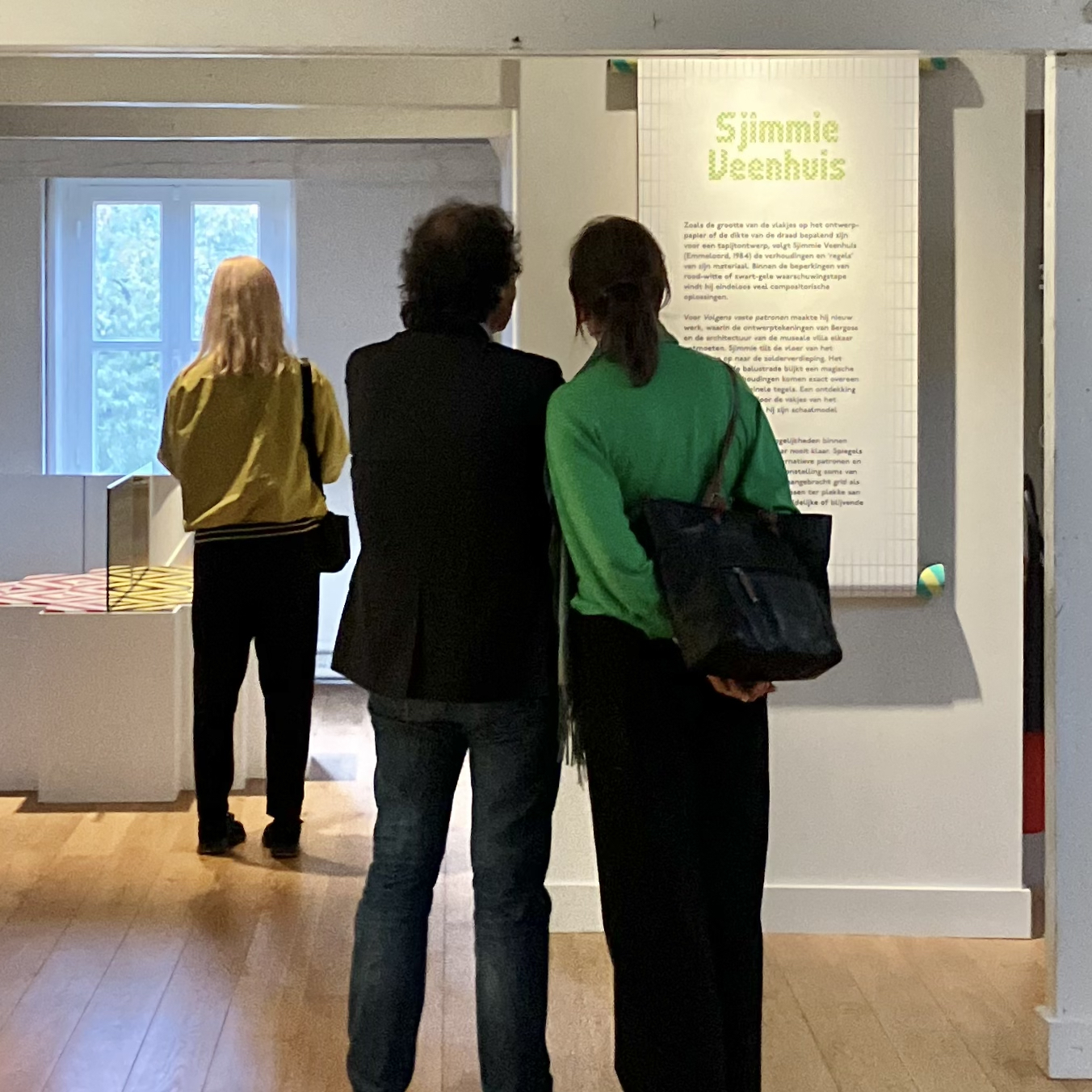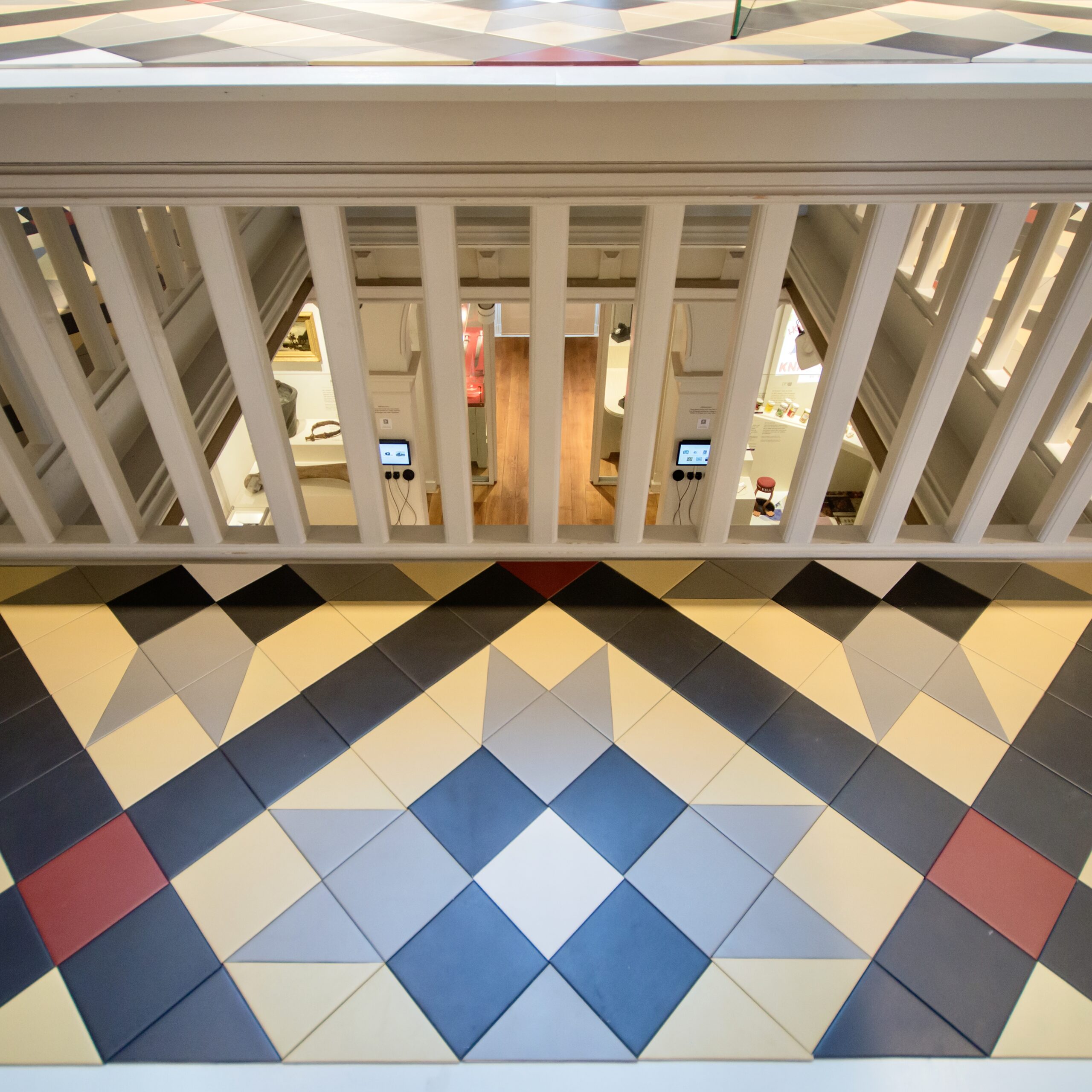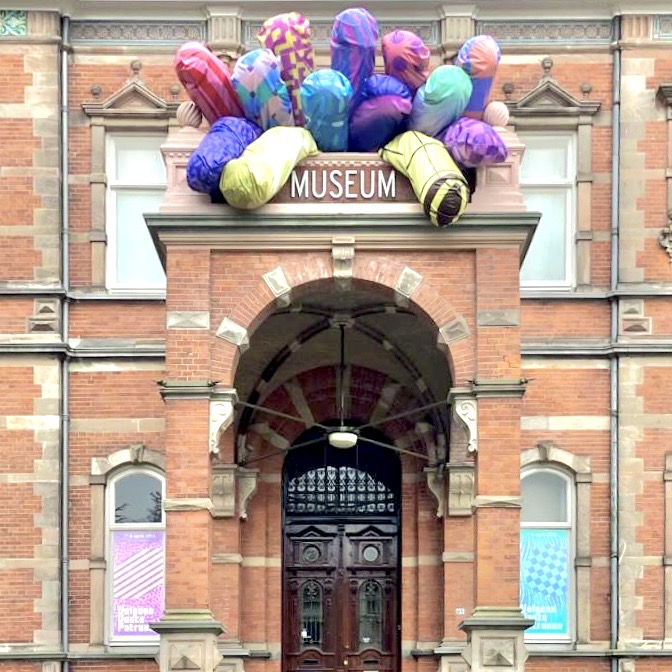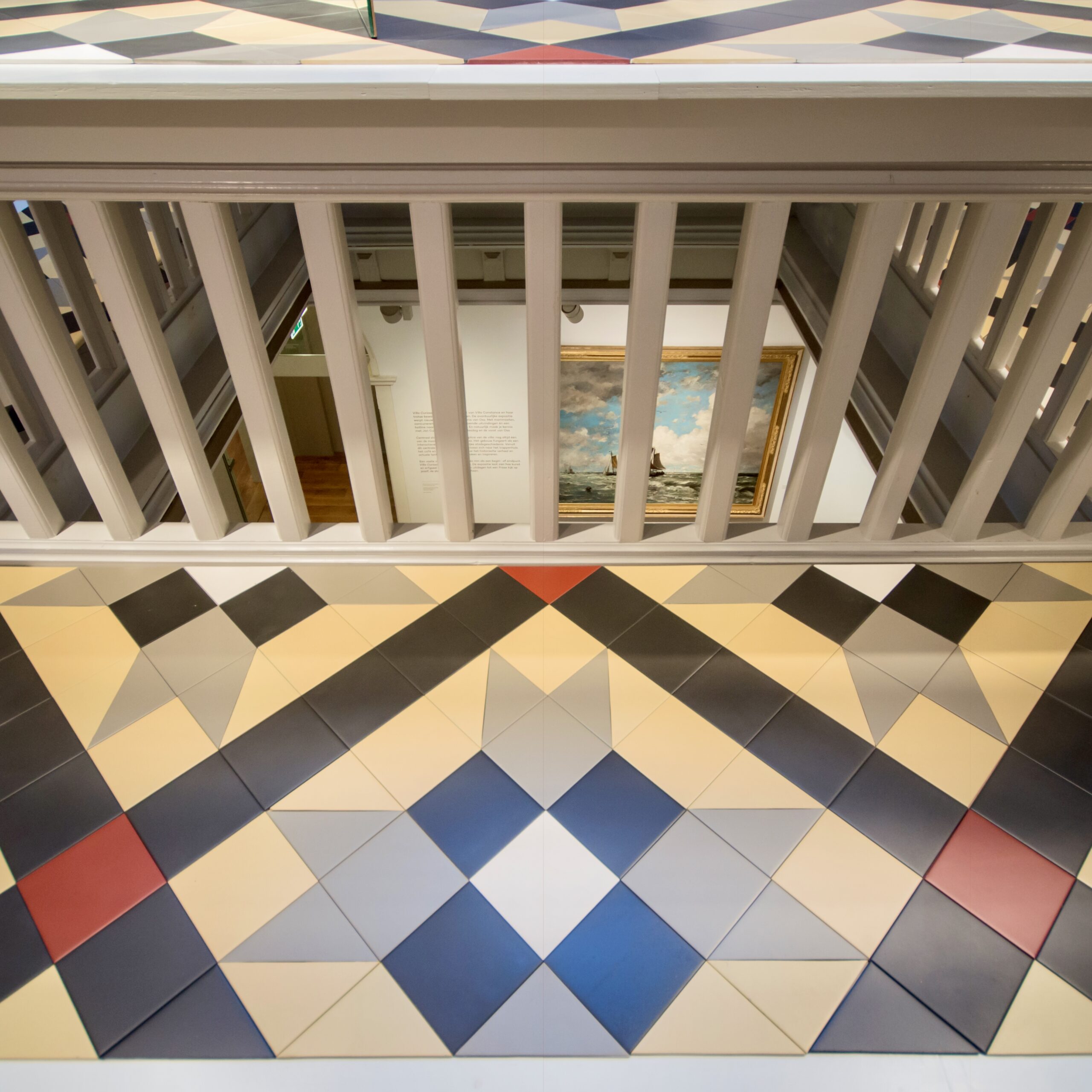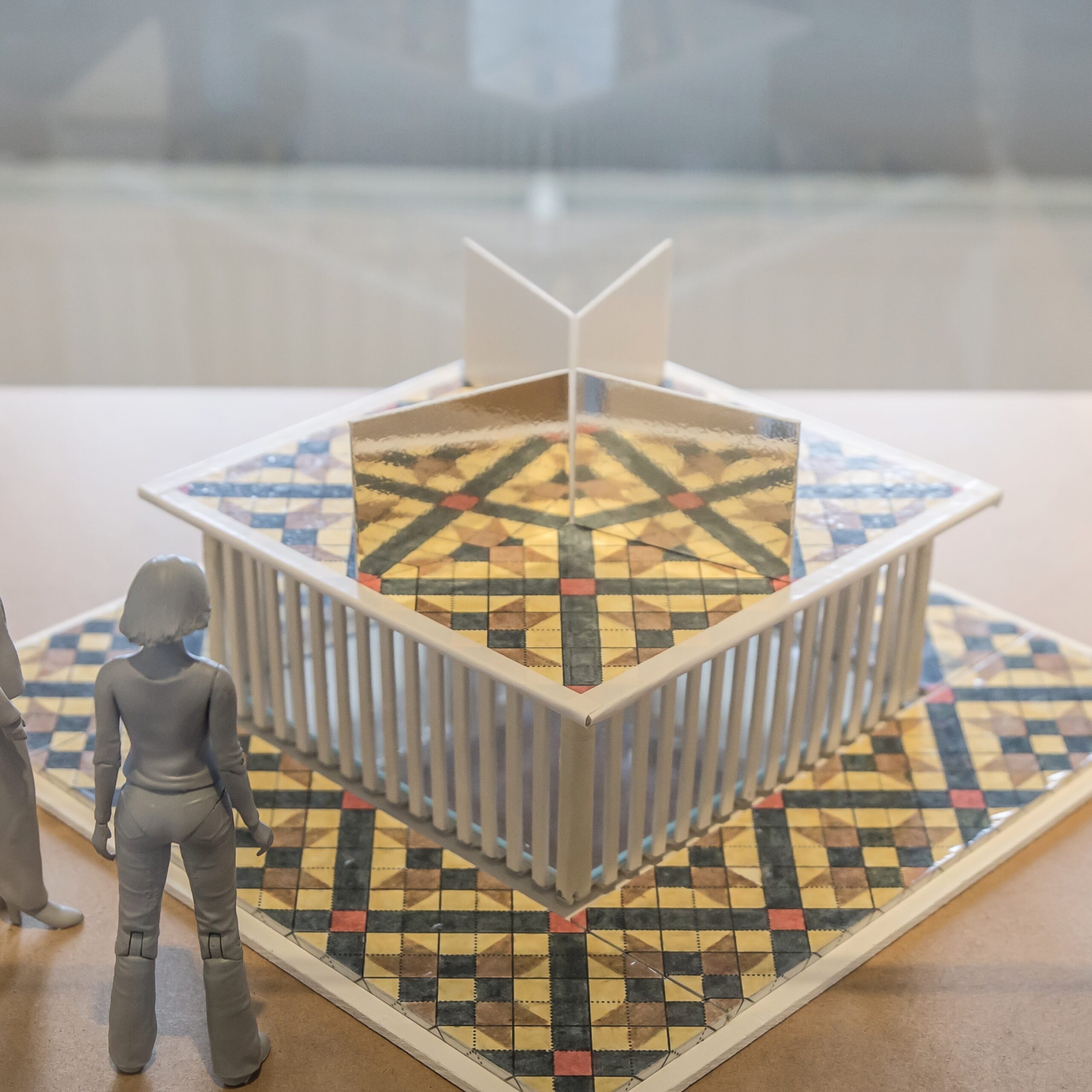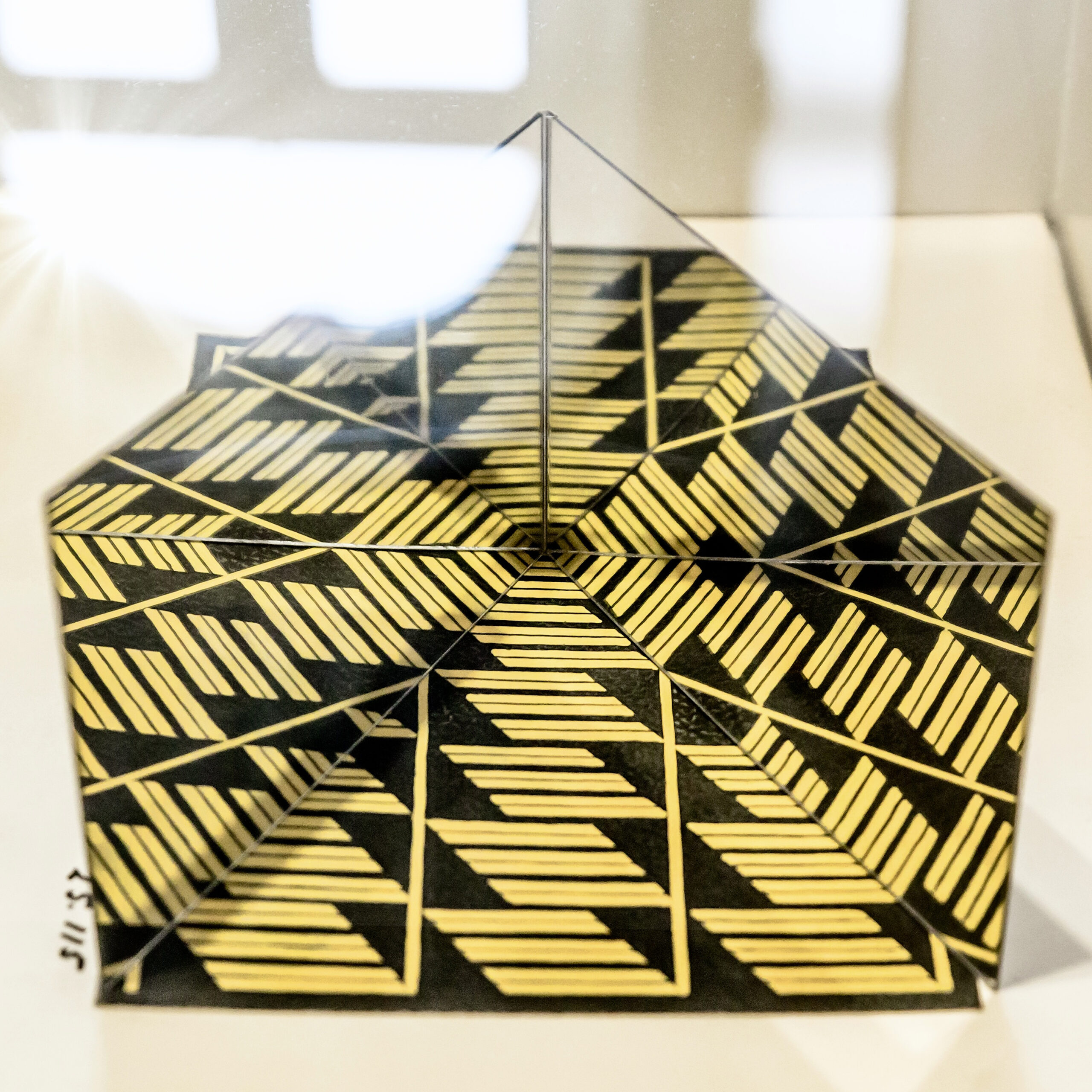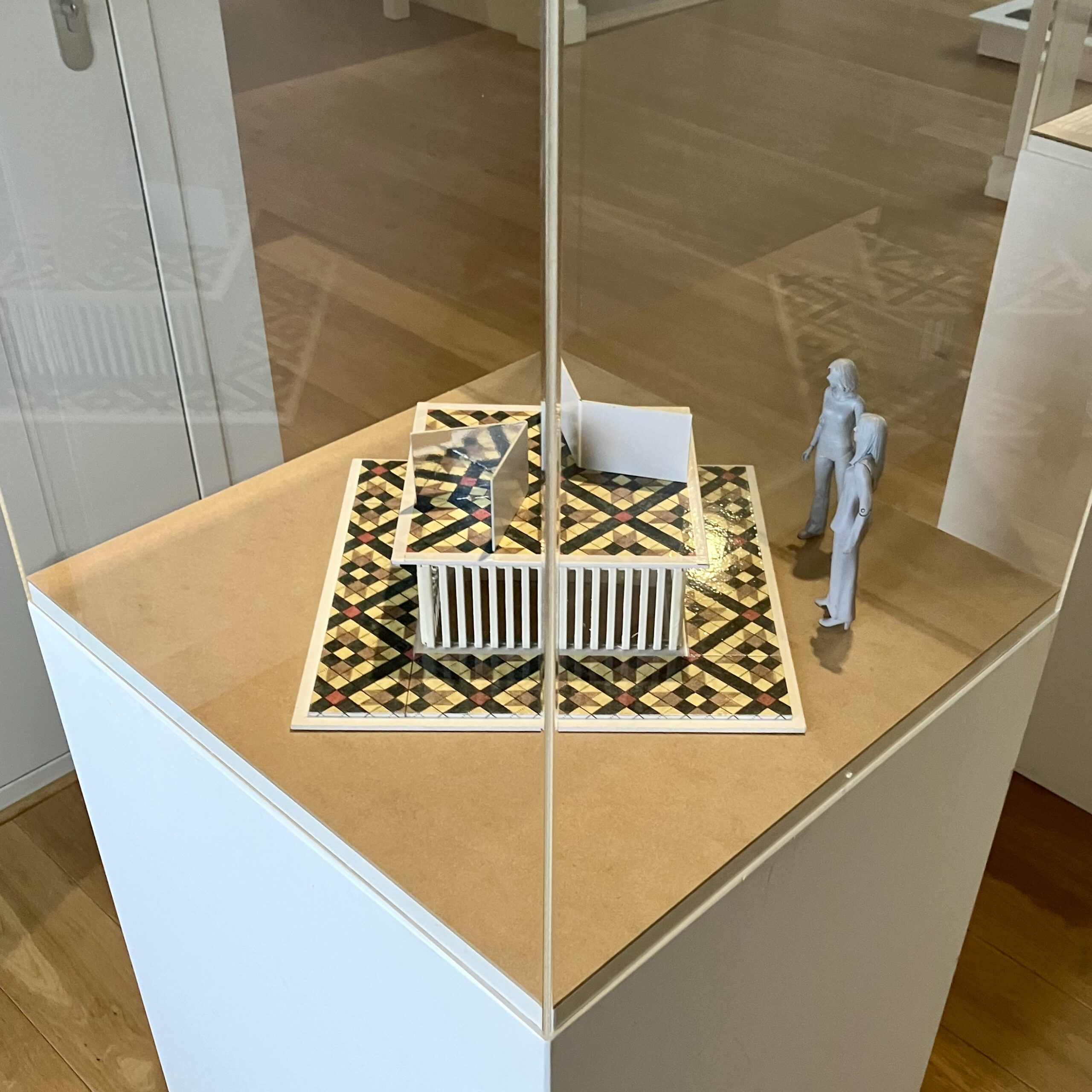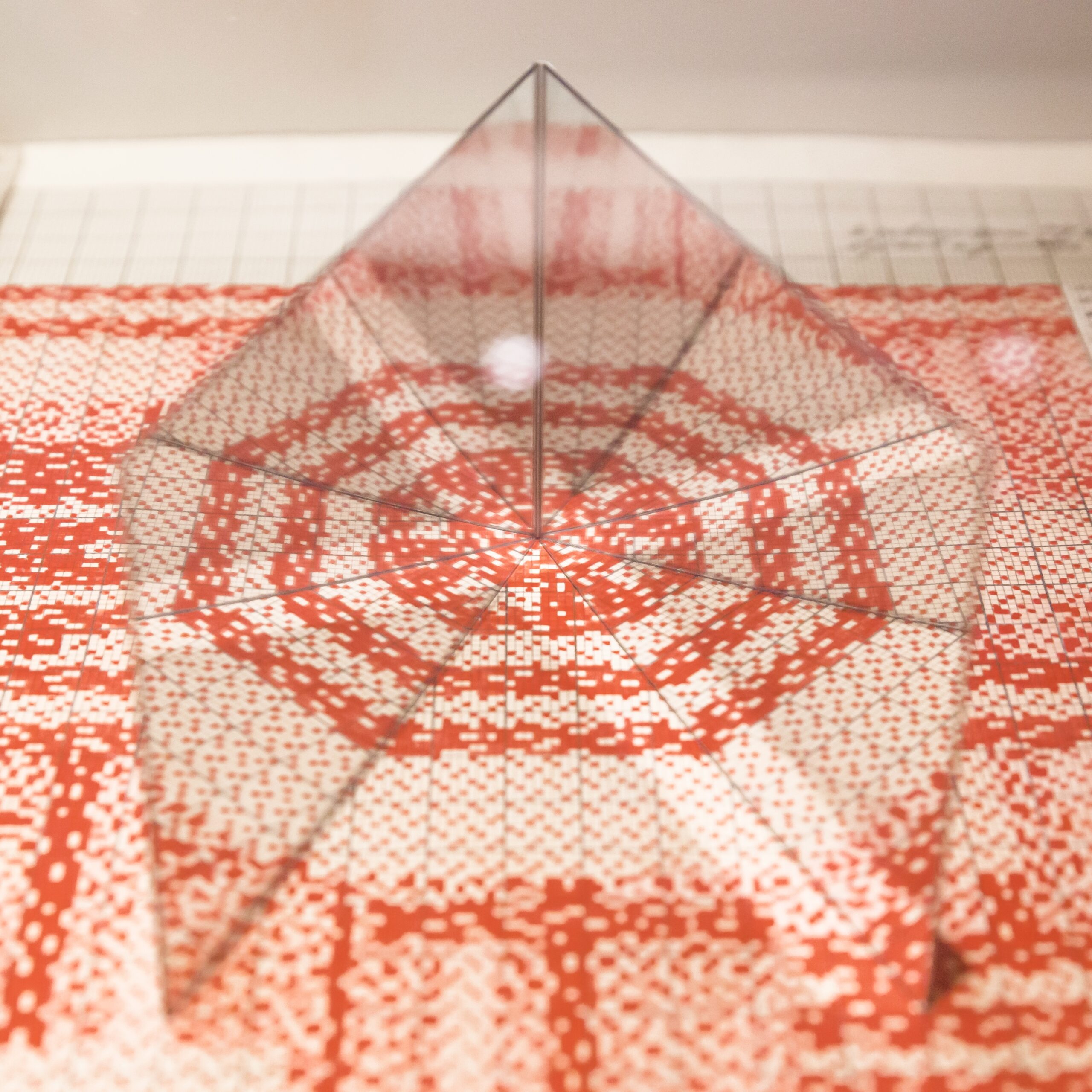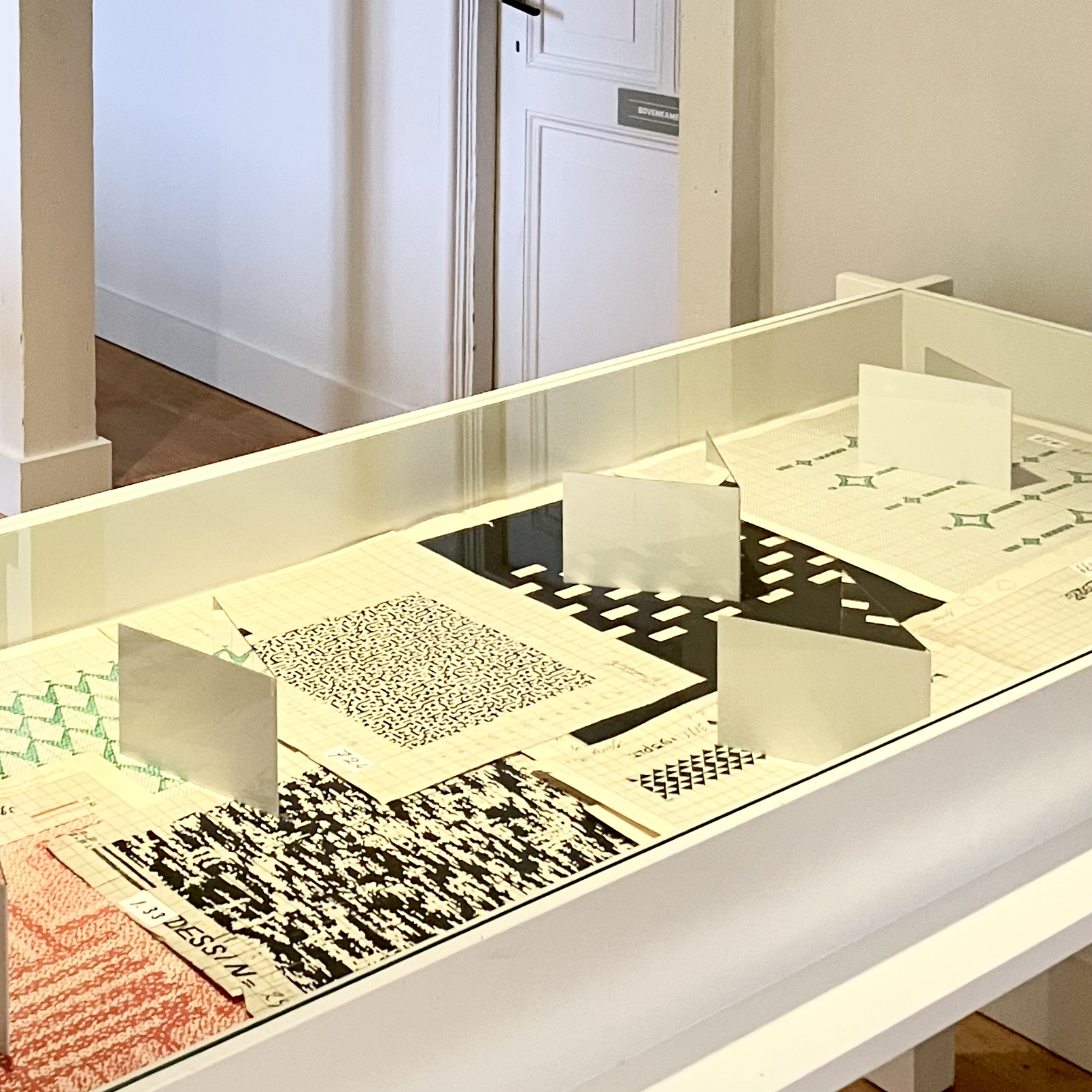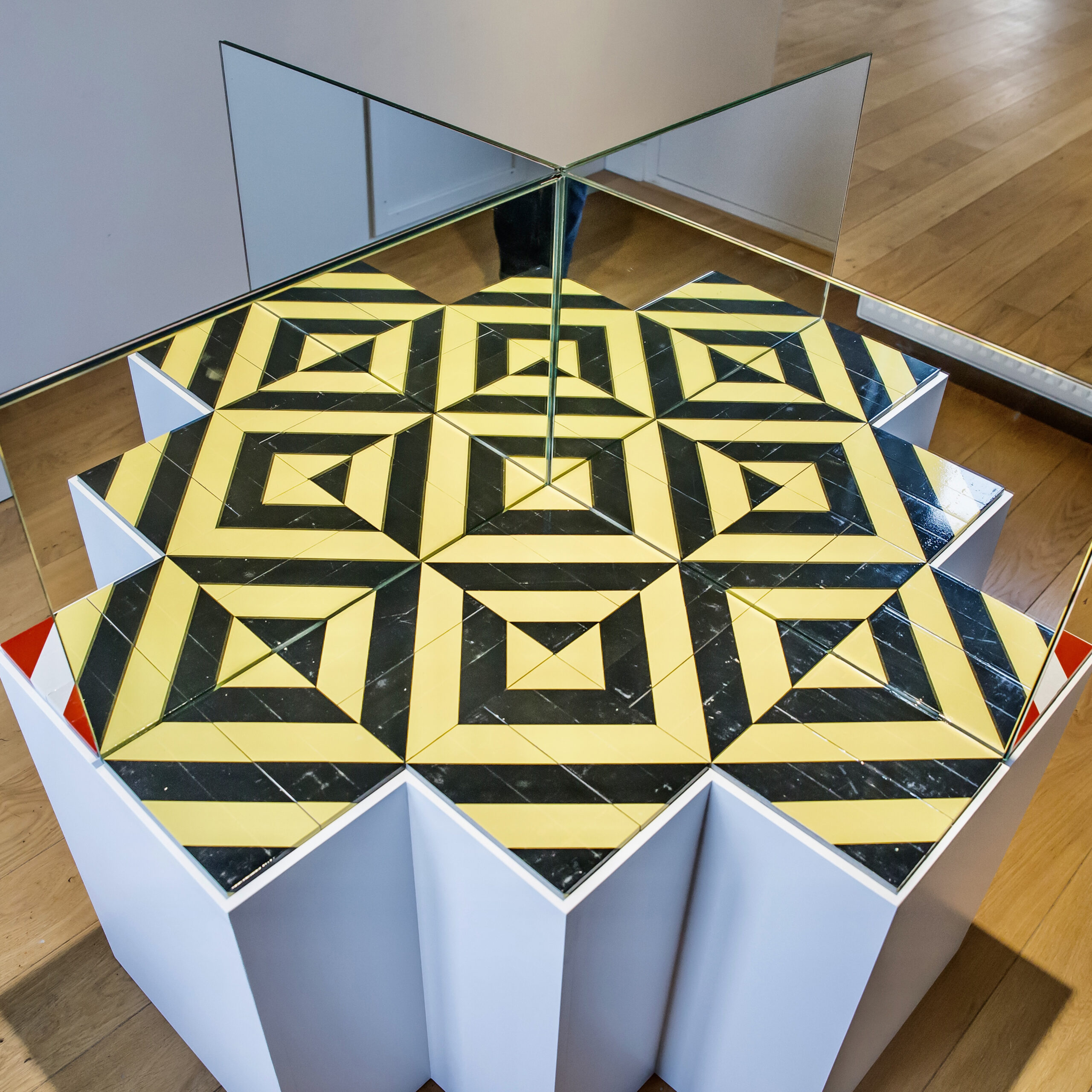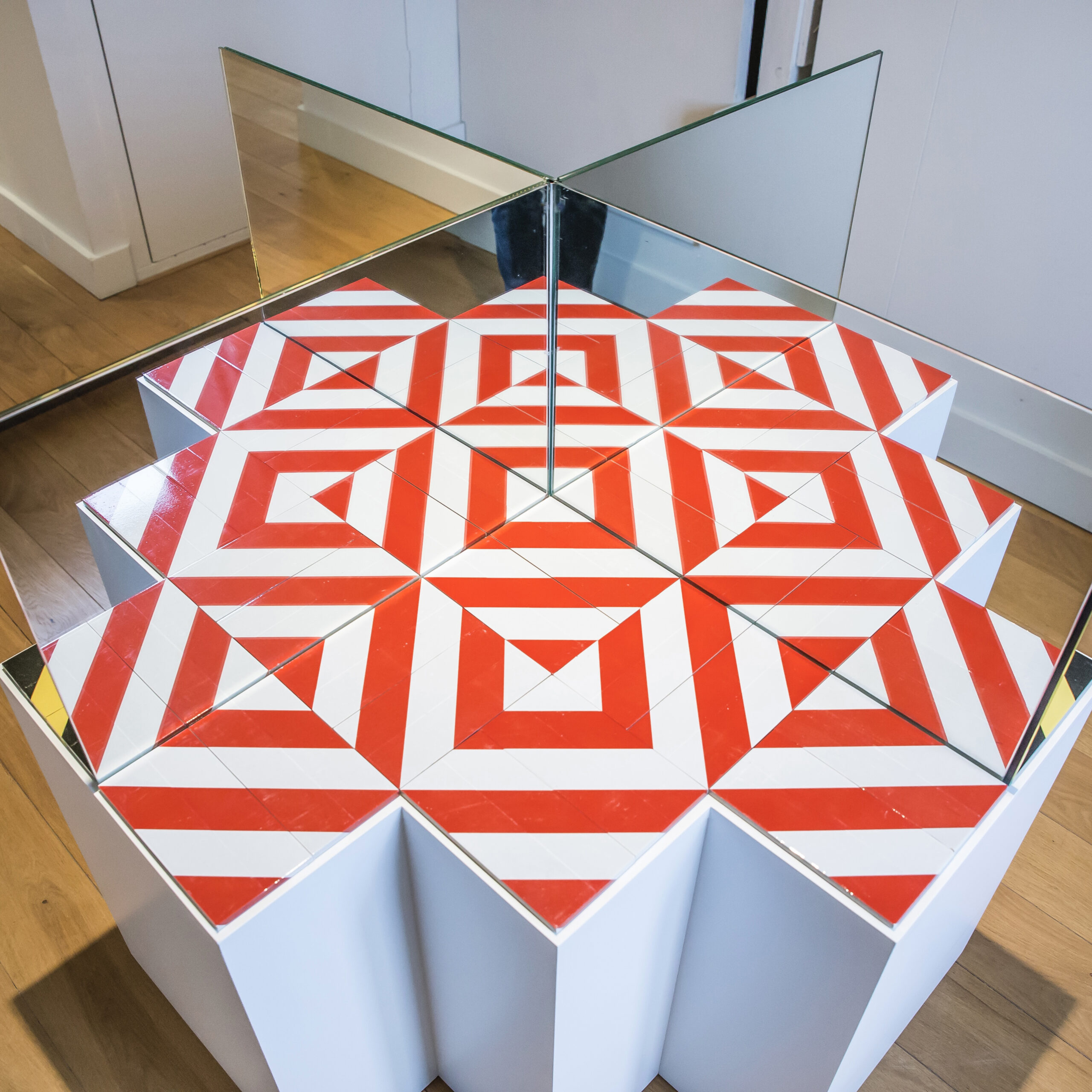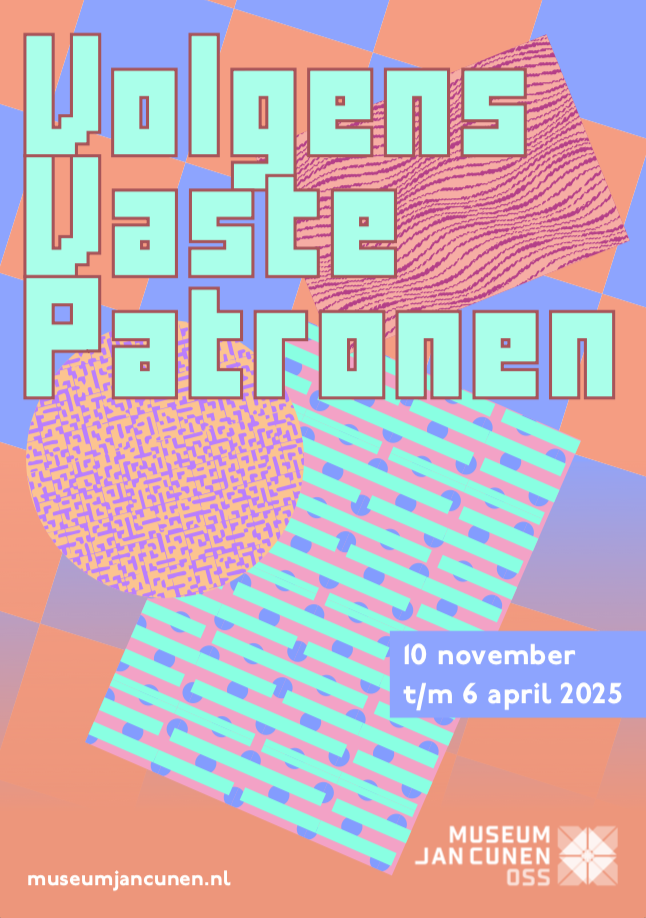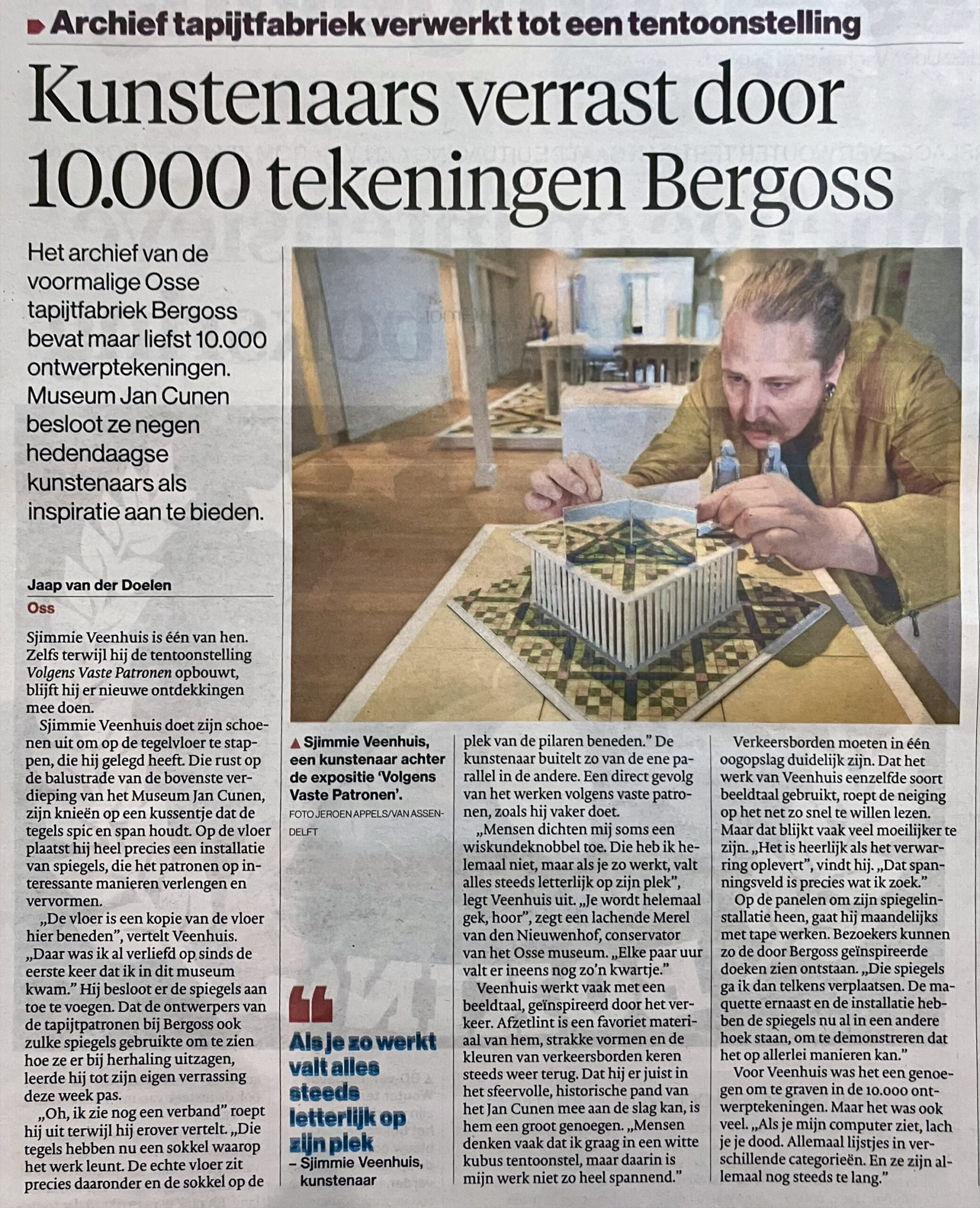The archive of the former Bergoss carpet factory contains no fewer than 10,000 design drawings. Museum Jan Cunen decided to offer them nine contemporary artists as inspiration.
Sjimmie Veenhuis is one of them. Even while he is building the exhibition, he continues to make new discoveries with them. Veenhuis takes off his shoes to step onto the pattern of tiles he has laid down. It rests on the balustrade of the top floor of the Jan Cunen Museum, his knees on a cushion that keeps the tiles neat. On the surface he very precisely installs some mirrors, which extend and distort the pattern in interesting ways. Even while building up the exhibition he continues to make new discoveries with them.
“The floor is a copy of the floor down here,” says Veenhuis. “I have been in love with that since the first time I visited this museum.” He decided to add the mirrors. To his own surprise, he only learned while
building the exhibition that the designers of the carpet patterns at Bergoss also used
such mirrors to see how they would look repeatedly.
“I just found another connection,” he exclaims as he talks about it. “Those tiles in de middle part of the pattern now have a pedestal on which the work rests, and the four pillars on the real floor are exactly below that.” The artist thus tumbles from one parallel to the next. A direct result of working according to fixed patterns, as he often does.
“People sometimes attribute me to being a math whiz. Which is not the case at all, but if you work the way I work, everything literally falls into place,” Veenhuis explains. “You go completely crazy,” says a laughing Merel van den Nieuwenhof, curator of the museum. “Every few hours another penny suddenly drops.”
He will work with tape on the empty panels around his mirror installation every month. Visitors can thus see compositions inspired by Bergoss being created on the spot.
“I’m also going to move those mirrors every time. The model next to it already have the mirrors in a different angle opposed to the installation, to demonstrate that it can be done in all kinds of ways.”
It was a pleasure for Veenhuis to dig through the 10,000 design drawings. But it was also a lot. “If you see my computer, you’ll laugh your head off. All lists in different categories, and they’re all still too long. The patterns I will be working with later are the patterns that Merel eventually found most suitable for me, and I like the fact that I didn’t make that final decision myself.”
Veenhuis likes to create or devise strict frameworks and push the boundaries within them. It forces creative solutions that continue to surprise him.
Jaap van der Doelen, 2024

